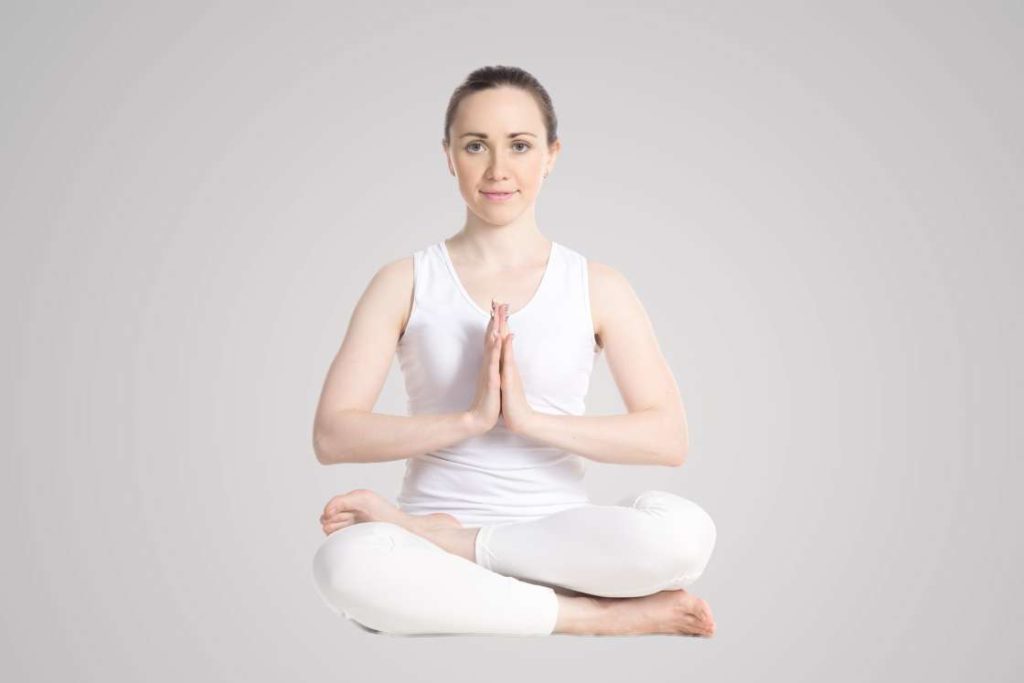
| Sanskrit Pronunciation | Ardha Padmasana (AR-da-pod-MAHS-anna) |
| Meaning | Ardha = Half / Padma = Lotus / asana = pose |
| Pose Type | Seated, meditative |
| Pose Level | Beginner pose |
| Focused muscles | Piriformis Muscles, thighs, Pelvic Muscles, glutes, buttocks, Hip flexors |
| Other Names | Ardha Kamalasana, Ardha Padmasana, Half Lotus Pose, |
Ardha Padmasana is a sitting cross-legged yoga posture. In preparation for full lotus pose, this pose is considered the best for beginners. It works on opening the hip joint to make the lower body flexible for long sitting in meditation.
However the Padmasana is the foremost pose among the four poses prescribed for Japa and Dhyana in Hatha Yoga Pradipika, But Ardha padmasana isn’t separate from the main pose ‘Padmasana’. It benefits in the same way as an advanced sitting pose.
Ardha padmasana is very simple to attain. It’s assumed by placing one foot on the opposite thigh while keeping another bent leg simply under the hips.
Ardha Padmasana Meaning & Representation
Ardha Padmasana is a Sanskrit term where ‘Ardha‘ means ‘Half’, ‘Padma‘ means ‘Lotus’, and ‘Asana‘ means ‘Pose’. One leg position in Ardha Padmasana appears like a petal of the lotus flower while another leg simply gets hidden below. The position of legs resembles a lotus flower with one petal, so it’s called Half Lotus Pose.
A blooming lotus flower with its petals represents purity, enlightenment, self-regeneration, and rebirth. Meditation in Ardha Padmasana cuts the outer world from your awareness and insists on sense organs to redirects the energy within the self.
The practice of Ardha Padmasana leaps the consciousness to the higher state and prepares to join the path of enlightenment. In this manner, Ardha Padmasana self regenerates the practitioners, which purifies their soul to lead the spiritual path.
Practice Guide
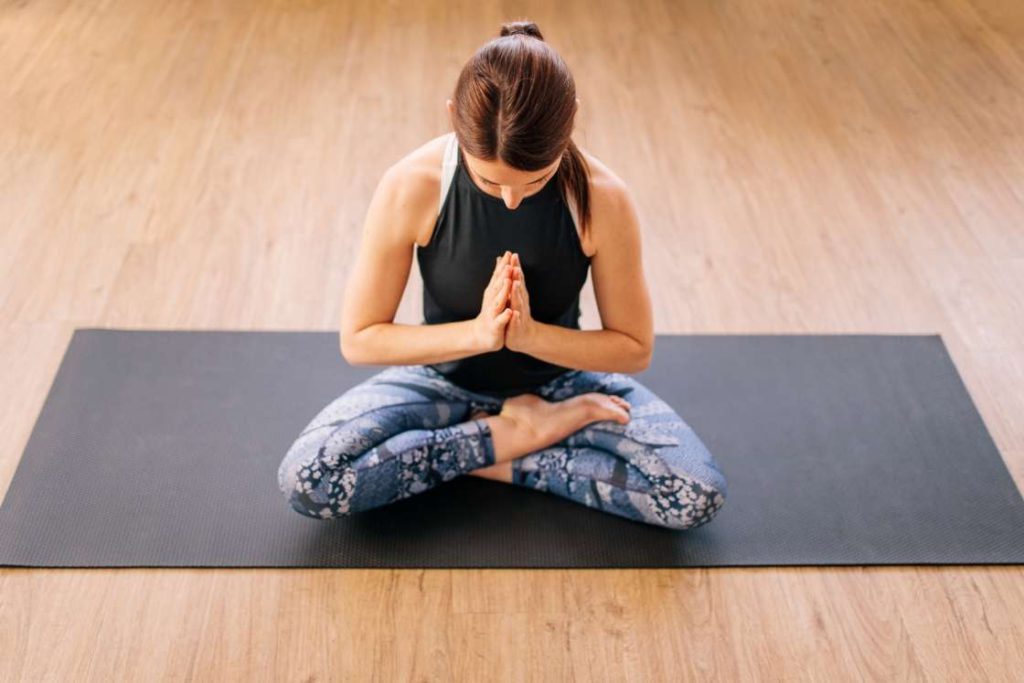
By going through the following steps one by one practitioners can learn and educate themselves for the safe practice of Ardha Padmasana.
Contraindications of Ardha Padmasana
The practice of Ardha Padmasana is not recommended in chronic knee and hip injuries. Also, avoid this asana in inflammatory knee conditions. The practitioners with severe sciatica nerve refrain from sitting longer in this asana or should come back on the experience of pain.
Preparatory Poses
Before coming into Ardha Padmasana, a practitioner is advised to go through below pose for more opening in the hips.
Ardha Padmasana (Half Lotus Pose) Steps
You can perform ardha padmasana on a yoga mat, carpeted floor, or soft surface. It’s advised to perform it at the end of a yoga session, if not, proper warm-up yoga is necessary before Ardha Padmasana practice.
- Begin by coming into Dandasana. Keep your legs, spine, and neck straight.
- Now, bend your right leg, grab your foot with both hands and place it in the left hip crease in a manner that your right sole facing the ceiling side.
- After that, slide your left leg and place it under the right thigh, where the left ankle presses against the right inner thigh. Both your legs remain in a crisscrossed fashion.
- Now, lengthen your spine to straighten the back and neck. Roll up your shoulder and place your hands on your respective knees along with the crown of the head facing the ceiling side as well.
- From here, close your eyes, or one can keep them open and breathe slowly and deeply. Now, maintain the pose for few minutes and then change your legs to complete the practice.
Follow Up Poses
After ardha padmasana follow up poses should be performed so that there is no blood circulation restrict in legs and lower body muscles.
Precautions
- Practitioners on experiencing pain while bending the knees and in the lower back due to sitting longer, should immediately release the Ardha padmasana pose.
- In order to place the right foot in the left hip crease, Practitioners should bring a convex curve in their spine to set up space for the leg leaving the floor.
- In the final position, avoid pressing the foot by the thighs. Keep legs free as it prevents tension in the calves and thighs.
Ardha Padmasana Beginners Tips
- In Ardha Padmasana, Practitioners with a high BMI index or Obese body might face difficulty in keeping their feet on either thigh. So, placing a block under each thigh act as a remedy in this.
- In the condition of the sensitive hip bone sitting longer in Ardha Padmasana become painful. To eradicate this, one should place a soft blanket under their hip bone.
- Keeping the spine erect in this asana aligns the chakras in a line. This is necessary for the prana to be affected by deep and slow breathing. So, those who are unable to keep their spine erect longer should sit against the wall. This will shift the focus on breathing instead of sine alignment.
Ardha Padmasana Variations
Parivrtta Ardha Padmasana and Baddha Padmasana are variations of the main pose Ardha Padmasana. To experience challenges practitioners can go through these asanas one by one.
1. Parivrtta Ardha Padmasana (Revolved Half Lotus Pose)
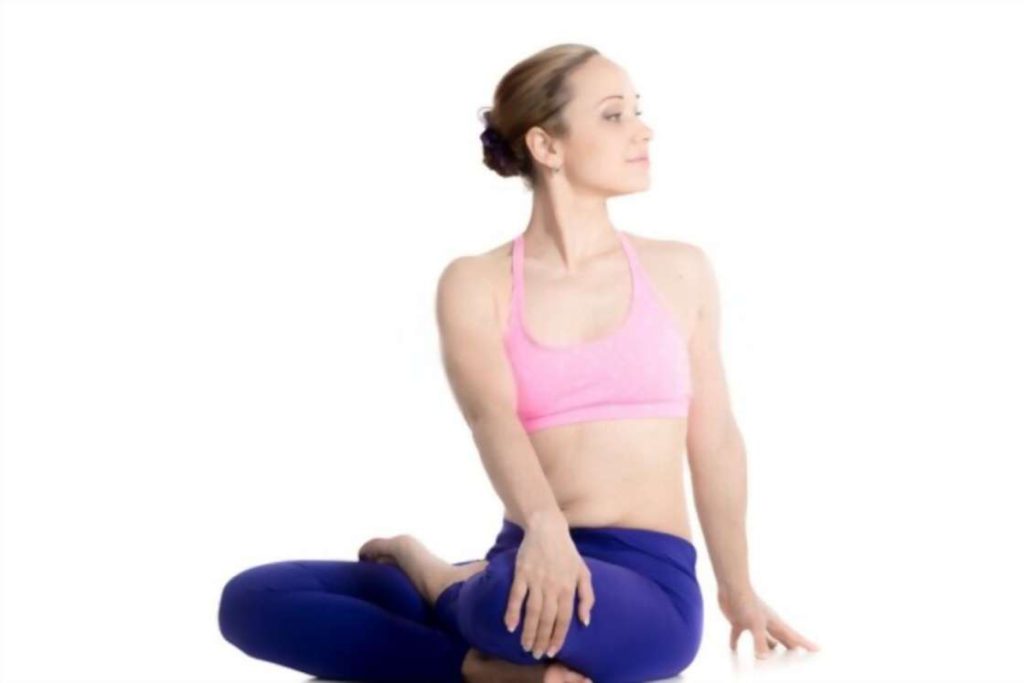
In Parivrtta Ardha Padmasana, the torso is twisted in one direction while both hands remain outside the same side knee to achieve a deeper twist. Legs are kept in similar to Ardha Padmasana.
Come into final Ardha Padmasana position. Place your one hand (say right) just behind your back and bring your left hand outside of the right knee. Exhale and twist deeper in the right direction, gaze at your right shoulder while maintaining the pose.
2. Baddha Padmasana (Bound Lotus Pose)
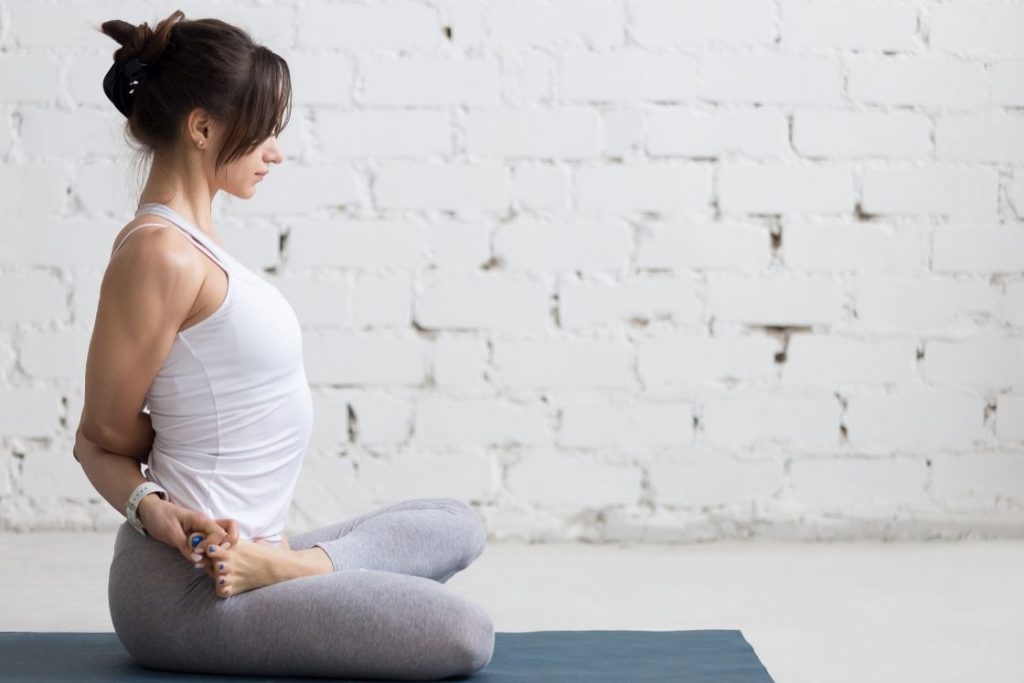
Begin by sitting in Padmasana in a manner your right leg rest on your left thigh, while your left leg rests on your right thigh. Bring them closer to the hip line and reach to the right foot by the right hand from behind the back. Now, reach to the left foot by the left hand from behind the back. Maintain here with an erect back and neck.
In Baddha Padmasana, Legs fold to form Padmasana and both hands grab both the foot from behind the back. Whereas, in Ardha Padmasana, both legs remain one on another, and hands are placed on respective knees.
Therapeutic Use
Practicing this pose in some physical conditions can help ease the condition. Here are some therapeutic use of ardha padmasana;
- Ardha padmasana stretches the inflamed Piriformis and gluteal muscles pressing against the sciatic nerve and causing pain. This stretching loosens the respective muscles, which then eases the sciatica pain.
- Inability to relax the pelvic floor muscles cause tension in it. This results in Hypertonic pelvic floor, which results in constipation, painful sex, urgency, and pelvic pain. Hence, Ardha padmasana practice stretches pelvic muscles and groin to add flexibility.
Ardha Padmasana Benefits
The regular practice of Ardha Padmasana improves various physical, emotional, and psychological aspects of the practitioner. Following are some of the benefits you get from practice.
1. Improves Respiratory rate
According to one study [efn_note] Metabolic and Ventilatory Changes During and After High-Frequency Yoga Breathing https://www.ncbi.nlm.nih.gov/pmc/articles/PMC4547545/ [/efn_note] Practicing Ardha Padmasana stimulates the regions of the medulla oblongata in the brain, which govern CO2 level in CSF (Cerebrospinal Fluid). In the case of high Co2 level, that region sends the message to fulfill the O2 demand or to increase no of breath per minute. Hence, improves respiratory rate.
2. Reduces Hypertension
Regular practice of Ardha padmasana improves breathing capacity. This results in better circulation throughout the body. In doing that, heart muscles work in a rhythmic fashion for a fixed period of time. This strengthens them, which allows the heart to pump more blood with less effort, hence less force on arteries. Ultimately, reduces high blood pressure.
3. Reduces Stress and Anxiety
It has been shown that interleukin-4 levels increased and interferon-gamma levels decreased during stress. According to one of the studies [efn_note] COVID-19 Pandemic and Yoga practice -New prescription for Stress Reduction? http://www.asrjs.com/pdfs/covid19-pandemic-and-yoga-practice-new-prescription-for-stress-reduction-12.pdf [/efn_note], regular Hatha Yoga practice like Ardha Padmasana helps in managing those cellular levels to reduce stress.
4. Correct Spine Alignment
Prolong sitting causes compression on the discs in your spine and can lead to premature degeneration, which results in chronic pain. The practice of Ardha Padmasana free up the compressed disk in your spine. Hence, correct spinal alignment.
5. Establishes Mindfulness
Meditation in Ardha Padmasana set up a deep state of concentration. This runs a cycle of inner thoughts, emotions, and bodily sensations within the practitioner. This results in experiencing the external sensation like sights, touch, and sound subtly. Ultimately, establishes a deepen Mindfulness.
6. Balances Various Chakras
Sitting erect along with slow and deep breathing helps the prana shakti to flow throughout the subtle channel uninterruptedly. This balances the sacral or swadhishtana chakra and Root chakra or Muladhara chakra. This enables the practitioner to creativity, movement, procreation, provides grounding and support, and it helps build the foundation for living your life as well.
Conclusion
Ardha Padmasana is an effective alternative for meditation practice for the practitioner who is unable to acquire Padmasana. So, it can be easily practiced by the various age group.
It balances chakras, improve flexibility in lower body, manages stress and also establishes mindfulness in the practitioner.
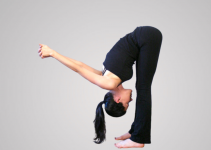
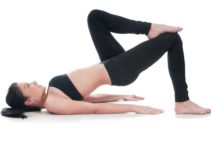
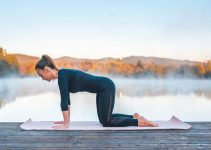
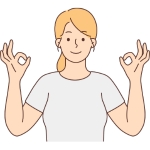
 Oct 24th to 30th
Oct 24th to 30th Learn Mudras
Learn Mudras  Deepen Your Practice
Deepen Your Practice  Find Inner Peace
Find Inner Peace